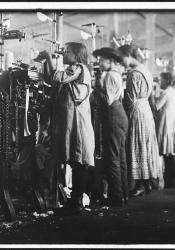Ten Hours Act
The history topic I chose to cover was The Factory Act, also known as the Ten Hours Act of 1847. From the United Kingdom Parliament, the act was put into place to limit the number of hours women and children (ages 13-18) could work. It established that said peoples could only work 10 hours per day in textile mills. There were two different sides to this act: the anti-regulation group, led by Ashworth and Greg, and the pro-regulation group, led by Ashley. When discussing why people and some mill owners were pro-act, it says, “A possible reason is that there is evidence supporting the view that it was in the interest of all employers’ to curtail labour beyond a certain point (Toms, 10)”. There is also claim that there were other reasons for the act, stating that it “increase the cost of production of many of the smaller textile mills, thereby causing them to curtail their output (Toms, 10)”. Those pro-act had views that supported both their businesses, as well as providing a more reasonable working day for their workers.
The anti-regulation group held other views on the act. The group claimed that it was seen to be as a threat to the owners (Michie). Even with the opposers, the Factory Act was established and was said to have helped shaped society, as well as, “imagining a wider field in which individual rights would be granted and protected (Michie)”.
Michie, Elsie B. “On the Sacramental Test Act, the Catholic Relief Act, the Slavery Abolition Act, and the Factory Act.” BRANCH: Britain, Representation and Nineteenth-Century History. Ed. Dino Franco Felluga. Extension of Romanticism and Victorianism on the Net. Web. Accessed 12 Oct. 2020.
The National Archives. “1833 Factory Act.” The National Archives, The National Archives, 1 July 2020, www.nationalarchives.gov.uk/education/resources/1833-factory-act/. Web. Accessed 12 Oct. 2020.
Toms, Steven. “‘Cold, Calculating Political Economy’: Fixed Costs, the Rate of Profit and the Length of the Working Day in the Factory Act Debates, 1832-1847.” MPRA Paper, 2014. EBSCOhost, search.ebscohost.com/login.aspx?direct=true&AuthType=ip&db=edsrep&AN=edsrep.p.pra.mprapa.54408&site=eds-live&scope=site. Web. Accessed 12 Oct. 2020.
“The Working-Class During the Industrial Revolution: Growth & Ideologies.” Study.com, June 2014, study.com/academy/lesson/the-working-class-during-the-industrial-revolution-growth-ideologies.html. Web. Accessed 12 Oct. 2020.

